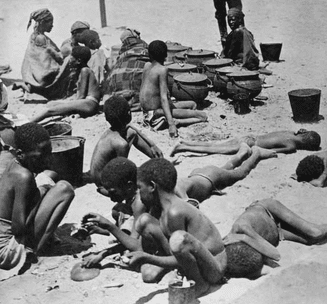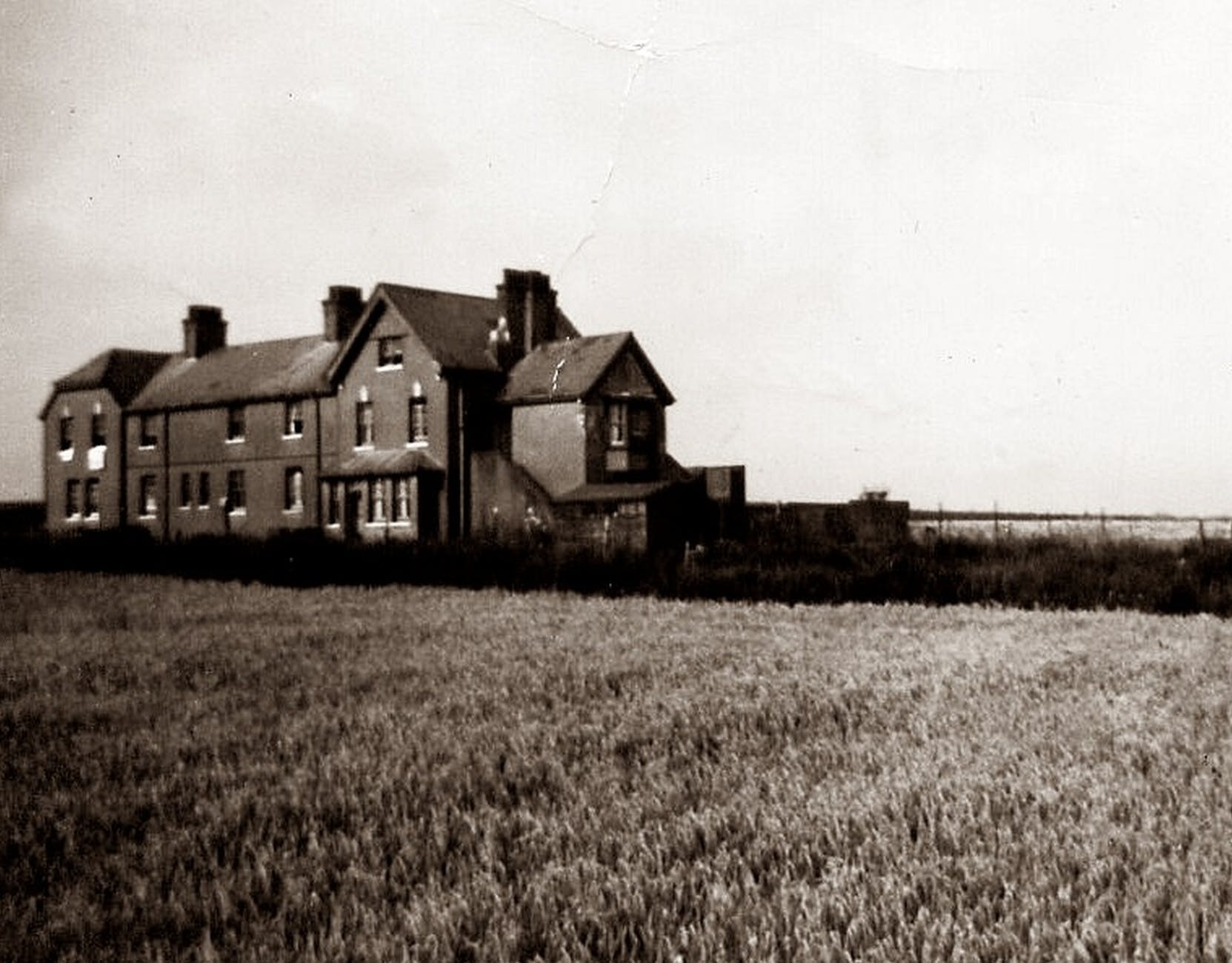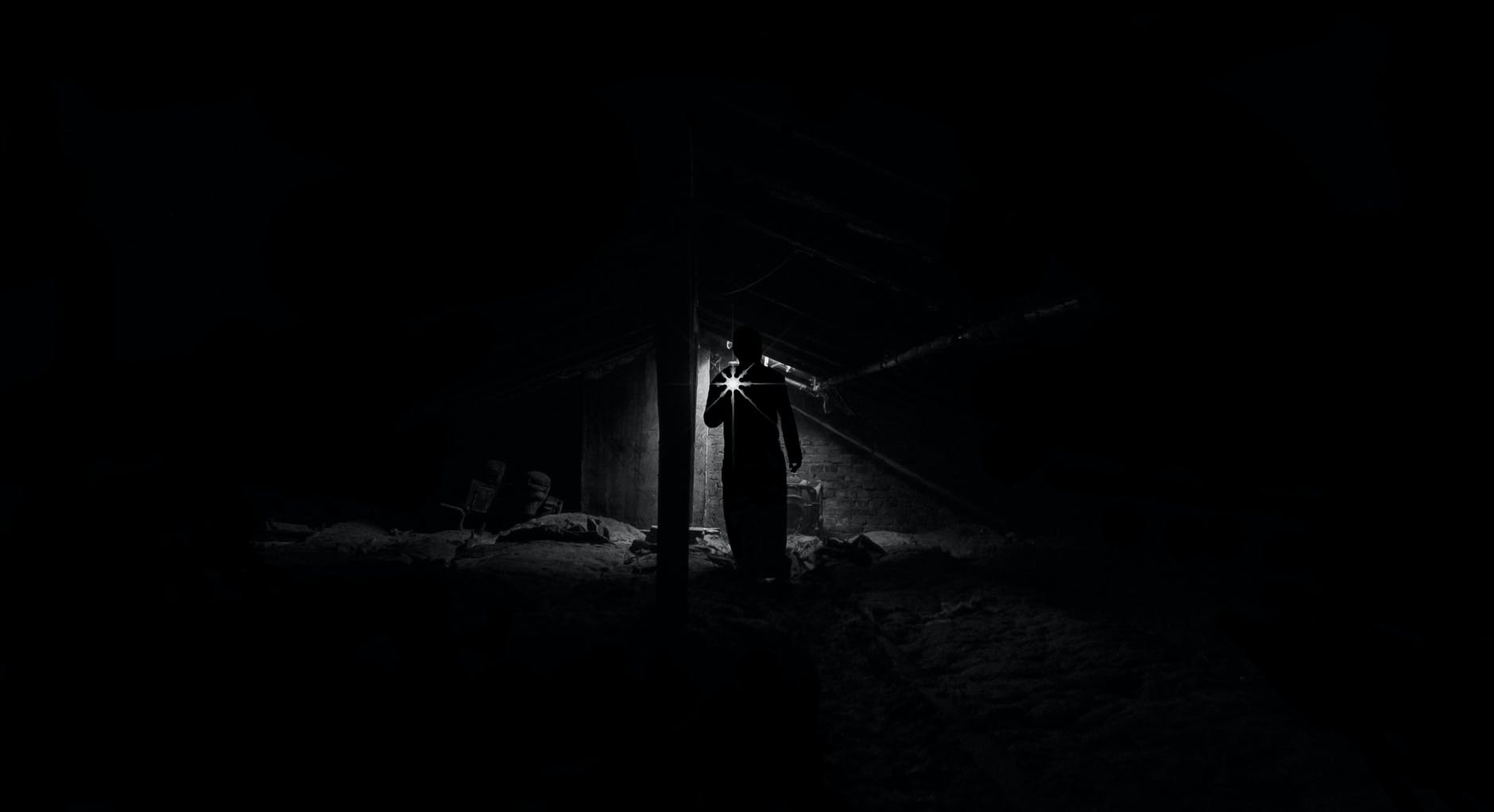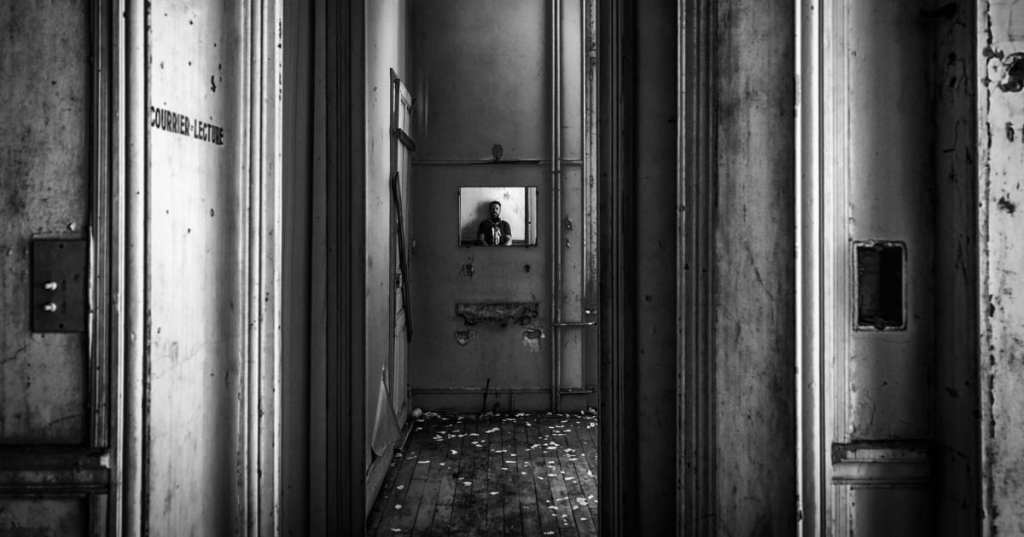People love reading horror stories. We love scaring ourselves silly with horror movies, we read horror novels, and people like Stephen King and Alfred Hitchcock have made literal livings making people pee their pants with fright.
So many of us listen to true crime podcasts and watch the “murder shows” like Unsolved Mysteries.
That said, most of us don’t expect to ever end up inside one – and we also would very much like to avoid that, wouldn’t you say?
These 4 people ended up smack in the middle of a nightmare, though, and to what I imagine was their horrified dismay, the situation ended up being all too real.
4. Shark Island Concentration Camp

Image Credit: Wikimedia Commons
The Germans were experimenting with the idea of pure genetics and forced labor camps where everyone died before WWII – even way back at the turn of the 20th century, in fact, when they committed the Herero and Namaqua genocide in Namibia. They killed thousands of Herero people during their “racial struggle,” shooting men and leaving women and children to die of thirst in the desert.
In 1904, they rounded up those who had survived and sent them to Shark Island concentration camp.
Shark Island was a 100-acre island just off Namibia’s coast, and the 80% of prisoners who died there surely thought it was ironic, how close and yet how far they were from home.
Some prisoners died of hunger or thirst, others of exposure, and still more from the relentless day-to-day work in the camp (sound familiar?). Despite the name of the camp, none that we know of were eaten by sharks.
At least, not while they were alive.
The guards disposed of pretty much every body by feeding them to the sharks. They buried the corpses at low tide and then waited for the water to bring the sharks in to feed.
Shark Island is now Shark Peninsula, as it is connected to the mainland.
3. The real Big Brother house.

Image Credit: Pexels
Turkey might have an official version of Big Brother now, but they did not back in 2009 – a fact that did not stop them rounding up a bunch of young women and depositing them in a house they weren’t actually free to leave.
We Are At Home was billed as a “Big Brother-style reality show, and featured contracts that claimed contestants would be fined $30k if they left before two months had passed.
The show was sort of legitimate, even if it was only being shown on the internet and not on television, as the contestants were led to believe. Viewers voted on their favorite residents and could even send them “virtual gifts” that didn’t actually exist, but let the contestants know they had fans.
Despite the website promising all of the girls were over 18, at least one claimed to be 16, which makes the fact that those “gifts” were often lingerie and chocolates all the more creepy.
Guards stopped the girls who wanted to leave, and no option was given to them to pay their way out. Eight of the nine contestants maintain they were forcibly held against their will as the producers sold their nude photographs for cash.
Eventually, one of the girls’ parents contacted the authorities, and the military police showed up to insist the “contestants” be let go.
Basically, a bunch of very young women found themselves being peeped on the internet and couldn’t do anything to stop it.
So the company’s claim that “the contestants were not during their imprisonment sexually abused” dubious at best.
2. A “ghost” story from hell.

Image Credit: Pexels
Teenager Annie Andrews had recently lost her mother when she went on a date with a guy she had been talking to on the phone briefly. After meeting Danny LaPlante in person once, Annie decided she wasn’t interested and promptly forgot about him.
In the days that followed, strange things began happening at the Andrews home. Knocking sounds issued from within the walls, messages appeared written on the paint in blood-red marks, and the sounds of furniture scraping the floors sounded when Annie and her sister Jessica were home alone.
At first, they thought it was their mother but one message, Marry me, suggested otherwise.
When the police could find nothing suspicious (the messages were written in ketchup), the girls’ father sent them for counseling, figuring they were acting out after losing their mother.
The next time the “haunting” happened, the girls, terrified, ran to a neighbor’s. Their father returned home to find his home unsettled and a 15-year-old boy hiding in Annie’s bedroom, dressed like his dead wife and wielding a hatchet.
Yeah. There’s a picture for you.
It was, of course, Danny LaPlante, who Annie met for lunch one time two months prior.
Since then he had been living in a crawlspace in the family’s home, watching them through vents and only acting up when the father was out. He stole food and wrote on the walls while no one was home.
Only 17, Danny was sentenced to a juvenile facility. He ended up being released on bond while awaiting his adult trial, and while loose, raped a pregnancy nursery school teacher, then murdered her and her two older children (7 and 5).
He’s still in prison.
1. Olga and Pearl, not Thelma and Louise.
Late 1946 had not been good to single woman Pearl Lusk. She’s lost her job and was having trouble with her landlord, and feeling isolated was probably one of the reasons she decided to have a drink with a man she’d previously waved off on the subway.
His name was Allen LaRue (he claimed) and he told Pearl he was a detective in need of a hand photographing a suspect. Pearl needed a job, so she probably figured this was kismet.
LaRue told Pearl that Olga Rocco was suspected of stealing jewelry and hiding the goods under her dress. He claimed to have a special “x-ray camera” that would take a picture through her dress (ew), so he advised Pearl to “aim it low, at her waist” and, after a few trial missions, set her loose.
He told her the first shots didn’t come out right, but on New Year’s Eve, handed her a “new and improved” camera covered in wrapping paper.
That night, Pearl found Olga at a Times Square subway station, pointing the still-covered contraption at her, and pulled an attached wire. A shot rang out, and when the police tore the wrapping off the “camera” it revealed a sawed-off shotgun.
Olga, still alive, said simply “Well, he got me this time.”
“He” turned out to be Olga’s ex-husband Alphonse Rocco, who was also a gangster and kidnapper. She’d left him after just 18 months only to be held against her will and shot once previously, though she could never prove who was after her well enough to get the police to help protect her.
The day before Pearl shot her, in fact, the police had promised to send officer to guard her but hadn’t followed through.
Olga survived the shooting but lost part of her leg. She and Pearl (after the latter was acquitted by a grand jury) became friends, and Olga got a job selling jewelry, of all things.
As for Alphonse, he was caught robbing farmers in the mountains. He was shot and killed in the ensuing standoff, which I imagine no one considered a loss.
I love and hate stories like these, honestly.
They’re the reason I double-check my doors every night and also never, ever ignore that feeling in my gut.
You definitely shouldn’t, either.






